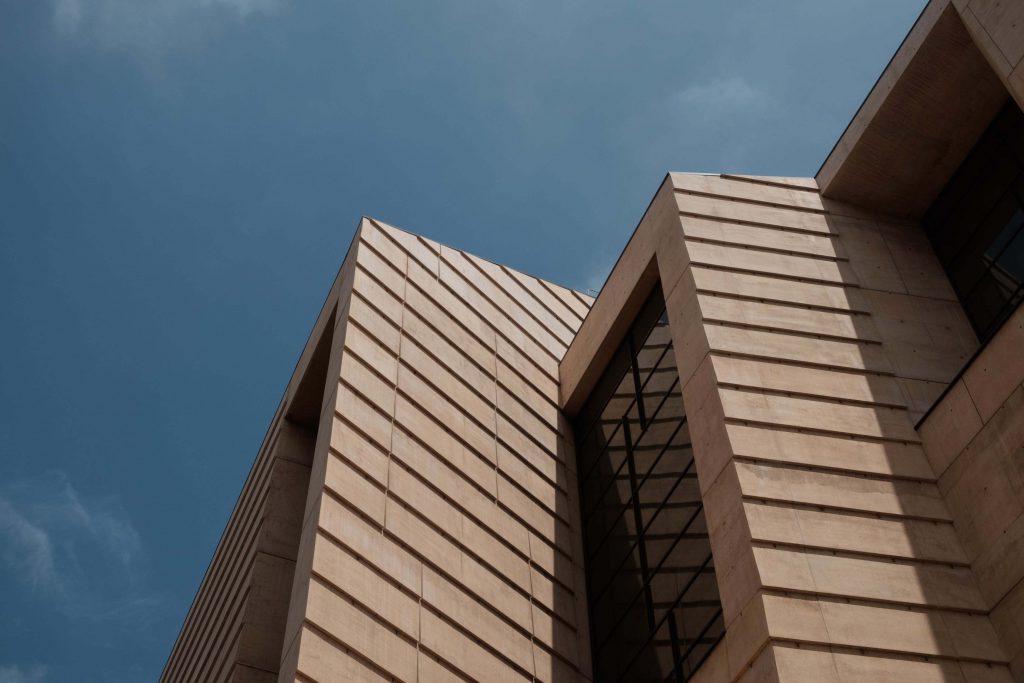Is your current tenant vacating your industrial building at the end of their lease term? Are you wondering what repairs, maintenance, and improvements you will need to make to the property prior to leasing it to a new tenant?
Getting your industrial property ready for a new tenant can become stressful if you don’t have systems in place. As Benjamin Franklin said, “If you fail to plan, you are planning to fail.” At Romano Litchfield & Associates, we find it easier to plan for the work we will be doing by focusing on three areas of the property rather than a long list of specific items. These three areas are:
- Offices
- Warehouse
- Exterior
Within these three areas, we include the repairs, improvements, replacements, etc. and begin creating a timeline so we can deliver the premises to a new tenant in a timely manner.
Below we will outline some common items that you should address, correct, or replace prior to leasing your industrial property to a new tenant.
Offices
- Paint: Interior office paint is typically a must if your previous tenant occupied the property over a few years. The cost is relatively inexpensive and goes a long way to show new tenants that you, as a landlord, are willing to take care of the property and make it presentable.
- Flooring: Whether you are cleaning or replacing the flooring, the flooring should be addressed. There’s nothing worse than seeing a building delivered with a ton of stains on the carpet. If you have VCT or LVT flooring, you can clean or polish the flooring if the overall condition of the floor is in good shape. With carpet, you typically will need to replace it as some stains can be burdensome or impossible to remove.
- Repair, Replace, or Paint Damaged and/or Stained Ceiling Tiles: A previous roof leak can lead to an aesthetically ugly ceiling tile in the offices. If the ceiling tiles are in good shape, you can paint the entire ceiling. Or, you can replace each individually damaged or stained ceiling tile.
- Restrooms: The restrooms must be cleaned prior to delivering the property to a new tenant. If the fixtures are up to date and are in good working condition, you don’t necessarily need to replace them. However, in the event they are not working, you should replace the fixtures for the new tenant. Tenant/landlord relationships don’t start off well when the restrooms aren’t working correctly upon delivery of the space.
- Janitorial: After all of the above work has been completed, you should have a janitorial company come to the property to clean the offices of all the debris caused by the construction.
Warehouse
- Paint: Interior office paint is typically a must if your previous tenant occupied the property over a few years. The cost is relatively inexpensive and goes a long way to show new tenants that you, as a landlord, are willing to take care of the property and make it presentable.
- Flooring: Whether you are cleaning or replacing the flooring, the flooring should be addressed. There’s nothing worse than seeing a building delivered with a ton of stains on the carpet. If you have VCT or LVT flooring, you can clean or polish the flooring if the overall condition of the floor is in good shape. With carpet, you typically will need to replace it as some stains can be burdensome or impossible to remove.
- Repair, Replace, or Paint Damaged and/or Stained Ceiling Tiles: A previous roof leak can lead to an aesthetically ugly ceiling tile in the offices. If the ceiling tiles are in good shape, you can paint the entire ceiling. Or, you can replace each individually damaged or stained ceiling tile.
- Restrooms: The restrooms must be cleaned prior to delivering the property to a new tenant. If the fixtures are up to date and are in good working condition, you don’t necessarily need to replace them. However, in the event they are not working, you should replace the fixtures for the new tenant. Tenant/landlord relationships don’t start off well when the restrooms aren’t working correctly upon delivery of the space.
- Janitorial: After all of the above work has been completed, you should have a janitorial company come to the property to clean the offices of all the debris caused by the construction.
Exterior
- Parking Lot Repairs: This is the best time to perform parking lot repairs, replacements, crack fill, slurry seals, etc. as you have the flexibility to perform this work while the property is vacant. Typically, you should slurry and seal every three to five years for industrial properties.
- Clean up the Landscaping: Your landscaping should be in good shape if you have a landscaper servicing it on routine basis, however if it isn’t, clean it up! This is one of the first things prospective tenants see when they arrive at the property to tour. First impressions are everything.
- Repair Roof: If you know there are leaks or defencies in your roof, you need to address it before a new tenant moves in. A new tenant might get upset when their product gets soaked due to a roof leak.
- Exterior Paint: If your exterior paint is starting to fade, peel, or fall apart, you should consider painting the exterior of the building. We have seen buildings transform to completely different buildings by simply painting the exterior.
Even with the best plan and systems in place, there are always “surprise” repairs and issues that may arise during this process. This, for the most part, is common during this process. However, by utilizing the above plan, you are in a better position to handle these surprise situations.
Still feel overwhelmed? Part of Romano Litchfield and Associates’ services is to oversee this entire process for our clients. If you would like more information regarding this service, or any of our other services, please contact us.


